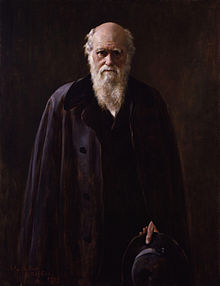
HMS Beagle was a Cherokee-class 10-gun brig-sloop of the Royal Navy, one of more than 100 ships of this class. The vessel, constructed at a cost of £7,803, was launched on 11 May 1820 from the Woolwich Dockyard on the River Thames. Later reports say the ship took part in celebrations of the coronation of King George IV of the United Kingdom, passing through the old London Bridge, and was the first rigged man-of-war afloat upriver of the bridge. There was no immediate need for Beagle, so she "lay in ordinary", moored afloat but without masts or rigging. She was then adapted as a survey barque and took part in three survey expeditions.
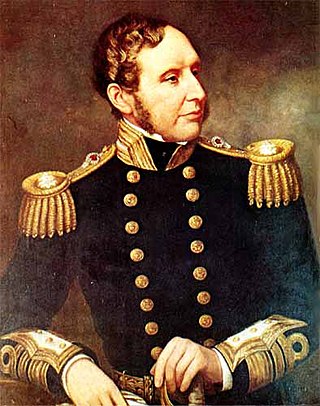
Vice-Admiral Robert FitzRoy was an English officer of the Royal Navy and a scientist. He achieved lasting fame as the captain of HMS Beagle during Charles Darwin's famous voyage, FitzRoy's second expedition to Tierra del Fuego and the Southern Cone.

Darwin's finches are a group of about 18 species of passerine birds. They are well known for their remarkable diversity in beak form and function. They are often classified as the subfamily Geospizinae or tribe Geospizini. They belong to the tanager family and are not closely related to the true finches. The closest known relative of the Galápagos finches is the South American dull-coloured grassquit. They were first collected when the second voyage of the Beagle visited the Galápagos Islands, with Charles Darwin on board as a gentleman naturalist. Apart from the Cocos finch, which is from Cocos Island, the others are found only on the Galápagos Islands.

John Gould was an English ornithologist who published monographs on birds, illustrated by plates produced by his wife, Elizabeth Gould, and several other artists, including Edward Lear, Henry Constantine Richter, Joseph Wolf and William Matthew Hart. He has been considered the father of bird study in Australia and the Gould League in Australia is named after him. His identification of the birds now nicknamed "Darwin's finches" played a role in the inception of Darwin's theory of evolution by natural selection. Gould's work is referenced in Charles Darwin's book, On the Origin of Species.
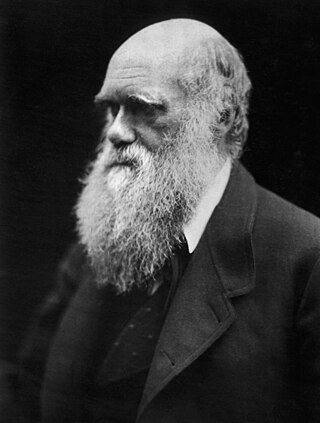
Darwin Day is a celebration to commemorate the birthday of Charles Darwin on 12 February 1809. The day is used to highlight Darwin's contributions to science and to promote science in general. Darwin Day is celebrated around the world.
The inception of Darwin's theory occurred during an intensively busy period which began when Charles Darwin returned from the survey voyage of the Beagle, with his reputation as a fossil collector and geologist already established. He was given an allowance from his father to become a gentleman naturalist rather than a clergyman, and his first tasks were to find suitable experts to describe his collections, write out his Journal and Remarks, and present papers on his findings to the Geological Society of London.

Darwin's rhea or the lesser rhea is a large flightless bird, the smaller of the two extant species of rheas. It is found in the Altiplano and Patagonia in South America.

Berberis darwinii, Darwin’s barberry, is a species of flowering plant in the family Berberidaceae, native to southern Chile and Argentina and naturalized elsewhere. Regional vernacular names include michay, calafate, and quelung. Growing to 3–4 m (9.8–13.1 ft) tall, it is an evergreen thorny shrub.

The second voyage of HMS Beagle, from 27 December 1831 to 2 October 1836, was the second survey expedition of HMS Beagle, made under her newest commander, Robert FitzRoy. FitzRoy had thought of the advantages of having someone onboard who could investigate geology, and sought a naturalist to accompany them as a supernumerary. At the age of 22, the graduate Charles Darwin hoped to see the tropics before becoming a parson, and accepted the opportunity. He was greatly influenced by reading Charles Lyell's Principles of Geology during the voyage. By the end of the expedition, Darwin had made his name as a geologist and fossil collector, and the publication of his journal gave him wide renown as a writer.
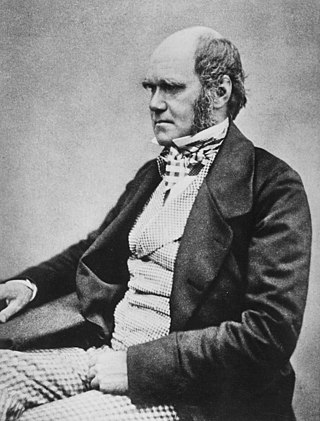
Charles Robert Darwin was an English naturalist, geologist and biologist, widely known for his contributions to evolutionary biology. His proposition that all species of life have descended from a common ancestor is now generally accepted and considered a fundamental concept in science. In a joint publication with Alfred Russel Wallace, he introduced his scientific theory that this branching pattern of evolution resulted from a process he called natural selection, in which the struggle for existence has a similar effect to the artificial selection involved in selective breeding. Darwin has been described as one of the most influential figures in human history and was honoured by burial in Westminster Abbey.
John van Wyhe, is a British historian of science, with a focus on Charles Darwin and Alfred Russel Wallace, at the National University of Singapore. He holds various academic and research positions, ranging from founder and director of The Complete Works of Charles Darwin Online, Scientific Associate, The Natural History Museum (London), a Fellow of the Linnean Society and a Member of the British Society for the History of Science. He has given more than 50 public lectures on Darwin in more than a dozen countries. He lectures and broadcasts on Darwin, evolution, science and religion and the history of science around the world. He also wrote The Darwin Experience, a biographical book about Charles Darwin.

Darwin's ringed worm lizard is a species of amphisbaenian in the family Amphisbaenidae, endemic to South America.

Sarah Catherine Darwin FLS is a British botanist.
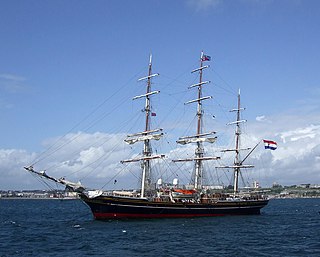
Beagle: In het kielzog van Darwin was a Dutch-Flemish television series from 2009 and 2010 initiated by the VPRO in collaboration with Teleac and Canvas, to commemorate the 150th anniversary of Charles Darwin's ground-breaking book On the Origin of Species. The series is centred on an 8-month voyage around the world on board the clipper Stad Amsterdam, which follows the route of the five-year-long voyage of Charles Darwin on board of the ship HMS Beagle between 1831 and 1836. The Stad Amsterdam departed from the English port of Plymouth on September 1, 2009.
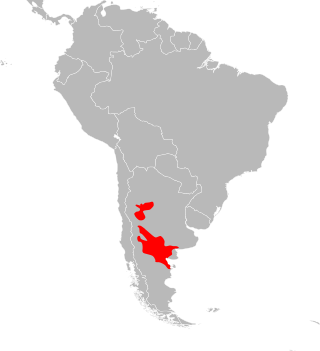
Liolaemus darwinii, also known commonly as Darwin's tree iguana, is a species of lizard in the family Liolaemidae. The species is endemic to Argentina.
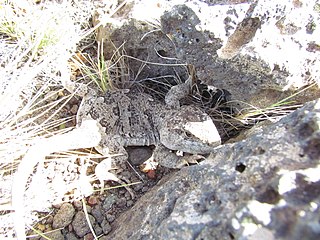
Diplolaemus darwinii, also commonly known as Darwin's iguana and the southern Patagonian lizard, is a species of lizard in the family Leiosauridae. The species is native to the southern tip of South America.
Extracts from Letters to Henslow, taken from ten letters Charles Darwin wrote to John Stevens Henslow from South America during the second survey expedition of HMS Beagle, were read to the Cambridge Philosophical Society on 16 November 1835 by Henslow and Adam Sedgwick, followed on 18 November by geological notes from the letters which Sedgwick read to the Geological Society of London. On 1 December 1835 they were printed as a pamphlet for private distribution.

Evolution Day is a celebration to commemorate the anniversary of the initial publication of On the Origin of Species by Charles Darwin on 24 November 1859. Such celebrations have been held for over a century, but the specific term "Evolution Day" for the anniversary appears to be a neologism which was coined prior to 1997. By highlighting Darwin's contributions to science, the day's events are used to educate about evolutionary biology. It is similar to the better-known Darwin Day, held on the anniversary of his birth. It is unrelated to the secularization campaign by the Giordano Bruno Foundation to have the German public holiday of Ascension Day renamed to "Evolutionstag".

Anthony Smith is a British sculptor who works in bronze. He is known for his wildlife sculptures as well as his depictions of well-known figures, including Charles Darwin, Ian Fleming, and Alfred Russel Wallace. He has been awarded major public commissions including the design of a new £2 coin for the Royal Mint, the first new statue for London's Natural History Museum in more than eighty years, and a life-sized statue of Charles Darwin for Christ's College, Cambridge. In addition, he is a wildlife photographer.
